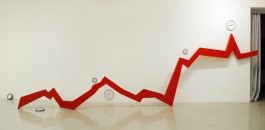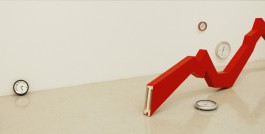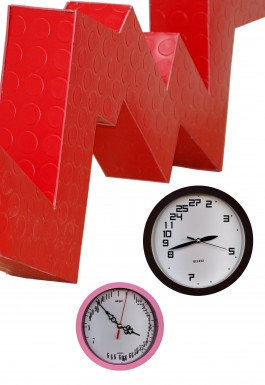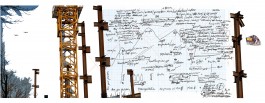



prognosis
rubberfloor, wood,
7x3x3m
6 clocks
Seoul
2006
exhibitionview: Contemporary gossip, Changdong Studio, Seoul
A city like Seoul with its people, buildings and smells will always stay undiscovered for 98% as your capability cannot be sufficient for such a mass of images, facts and stories.
But still, the 2% of the images you caught will puzzle together as one. As if there was 98%water and only 2% information that flow around and but shape and give direction to presence and future. In this flow, not only advertisement and faces change constantly, but also buildings, techniques and even trees are replaced repeatedly by newer ones. When I have seen Gupabal, an area of torn down houses waiting to be replaced by new apartment buildings, then I felt a desire to create something new, which i do not find as strong and radical in Germany. Next to the big construction sides there are everywhere places in change and provisory solutions in Seoul, which promise contemporary development. The two percent from which we draw our conclusions, form our opinions and behavior in private and public.
My "prognosis" suggests to be walked on like a passway. Its construction is too temporary and floating in order to function. It rather develops with a changing collection of conclusions, wrong or right ones, than it is fixed to any "objective calculation".The time of course is excluded from all these changes, but as it is used with variable speed due to effectiveness and personal experience, there seem to run many different times simultaneously. Within that there is a potential. To be not in time and to be in an unfixed place means that something new can develop in a new way.If you detach from your coordinates like time to xx% you can replace xx% with new interpretations to go on.